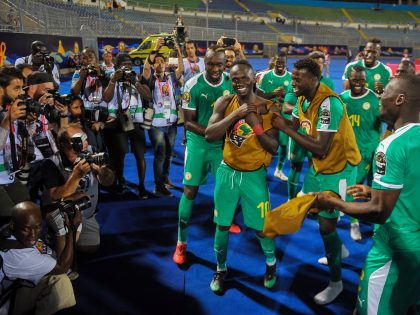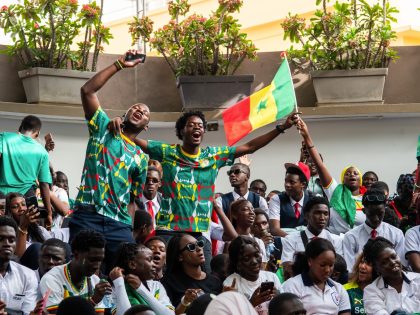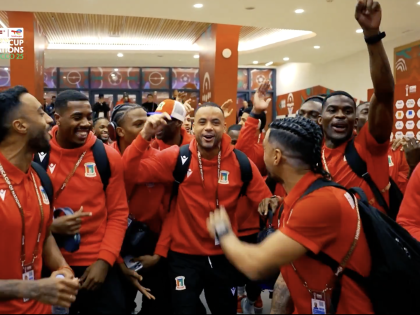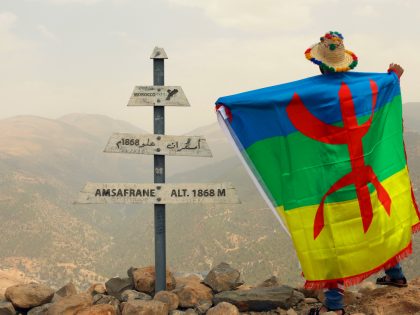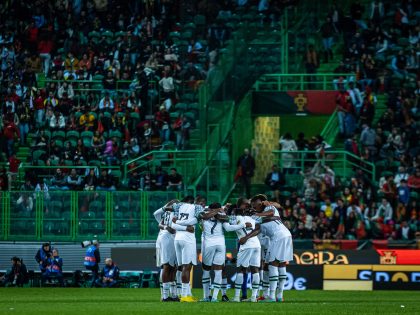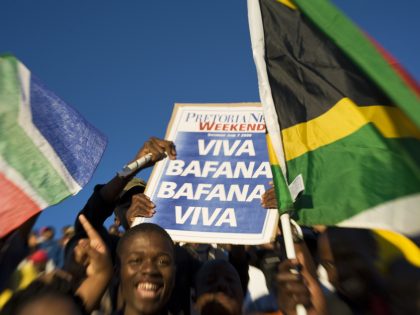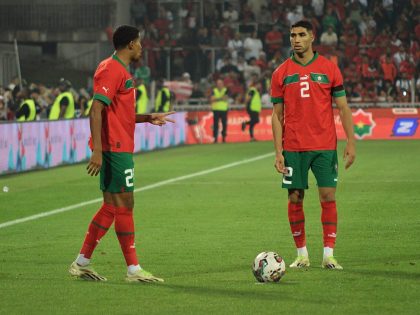Colonial Sahara
The constant struggle of the Sahrawi to assert their identity in the face of a permanent occupation by Morocco.

A still from the film.
Western Sahara serves as a powerful and timely reminder to the world that colonialism has not ended in Africa. It continues in the form of what the Sahrawi (the indigenous people of Western Sahara) activist Maty Mohamed-Fadel referred to as “the global shame” that is the Moroccan occupation of Western Sahara.
The majority of Western Sahara has been under occupation by Morocco for decades, following incomplete decolonization by Spain in 1975 when the territory was split between Morocco and Mauritania. A bitter war between the Polisario (the Sahrawi resistance movement) and Moroccan and Mauritanian forces ended in a ceasefire in 1991, and left Morocco in control of most of the territory. Polisario controls a small liberated zone, while hundreds of thousands of Sahrawi refugees live in camps in neighboring Algeria. Life for the Sahrawi people has effectively been on hold since then, as they continue waiting for their right to self-determination through a referendum on independence that was meant to take place in 1992.
Despite the ongoing, and often brutal Moroccan occupation, and the lack of international attention paid to the situation, the Sahrawi are not idly waiting for things to change. A new documentary film, Life is Waiting, directed by Iara Lee, is a celebration of Sahrawi strength and resistance, which is clearly alive and well amongst those living in Western Sahara and those in the refugee camps or in exile in other parts of the world.
The film opens with vibrant scenes of exiled Sahrawi engaging in an annual nonviolent demonstration in Madrid, Spain intercut with an overview of the history of the territory. It then goes on to vividly portray the constant struggle of the Sahrawi to assert their identity in the face of the everyday violence of the occupation.
We see Sahrawi poets, musicians, dancers, singers, media activists, athletes, and filmmakers all engaging in non-violent acts of resistance from graffiti, raising the Western Sahara flag (which is illegal), and watch as Lee covertly films police brutality in the occupied territory. Refugees also host an international marathon, international art festival, and an international film festival in the camps. Popular Sahrawi singer, Mariem Hassan (to whom the film is dedicated), describes the importance of using art to show the strength of the Sahrawi people. Even the structure of the refugee camps in Algeria is a symbolic act of resistance, with different areas deliberately named after parts of the occupied territory in order to reproduce and sustain the connection to it.
Lee largely eschews the use of narration and the opportunity to interview officials from the United Nations, Morocco, or even the Sahrawi Arab Democratic Republic (SADR), which controls the liberated territory. Instead she simply lets the Sahrawi people tell their story in their own voices (although some international activists are also interviewed). This gives a platform to the ordinary, perhaps the extraordinary people who are directly affected by the occupation, and the highlights variety of ways in which they continue to resist it.
The chance to be at the center of the narrative is one that the Sahrawi rarely get. Despite the fact that no state recognizes Moroccan sovereignty over Western Sahara and more than 80 states have at various times recognized SADR’s claims to the territory, the world continues to remain largely indifferent to the situation. As Mohamed Laabied, director of RASD-TV, the Sahrawi TV station headquartered in the refugee camps laments: the lack of attention paid to the occupation by international media and Moroccan censorship efforts “hurts, it really hurts … without the media there is nothing.”
The dangers of international indifference and the perpetuation of the status quo, which one Sahrawi describes as a “situation of neither war nor peace,” are evident in the film when a number of young Sahrawi, who have grown up knowing only occupation or exile, raise the possibility of a return to war, saying that it cannot be worse than a life of exile or living in a refugee camp. But the overwhelming majority of Sahrawi in the film, young and old, are in favor of using non-violent resistance and talk of their songs or films as the new weapons in the struggle.
Recently, the Polisario has warned that tensions with Morocco are coming close to devolving into a military confrontation. This highlights how unsustainable the current situation is. Watching this film serves as a timely reminder that it should not take a return to war to bring attention to the issue. The ongoing failure to advance a political solution and the warning from the Polisario makes the Sahrawi commitment to non-violent resistance even more remarkable. Towards the end of the film, the British human rights activist, Keith Lomax, emphasizes the need to find peaceful ways to give visibility to the conflict. The Sahrawi people are clearly doing this already and it is up to the rest of the world to do its part.
Watching and sharing Life is Waiting is an excellent start. Another step, as Lomax points out, is to support the boycott, divestment, and sanctions campaign against companies complicit in the Moroccan occupation (for instance through the exploitation of Western Sahara’s natural resources) like the one that targeted apartheid South Africa or the one targeting Israel for its violation of international law and Palestinian rights.
